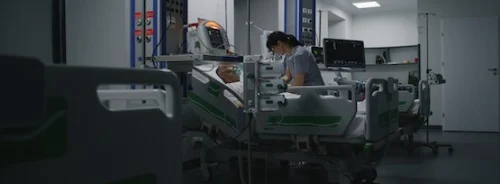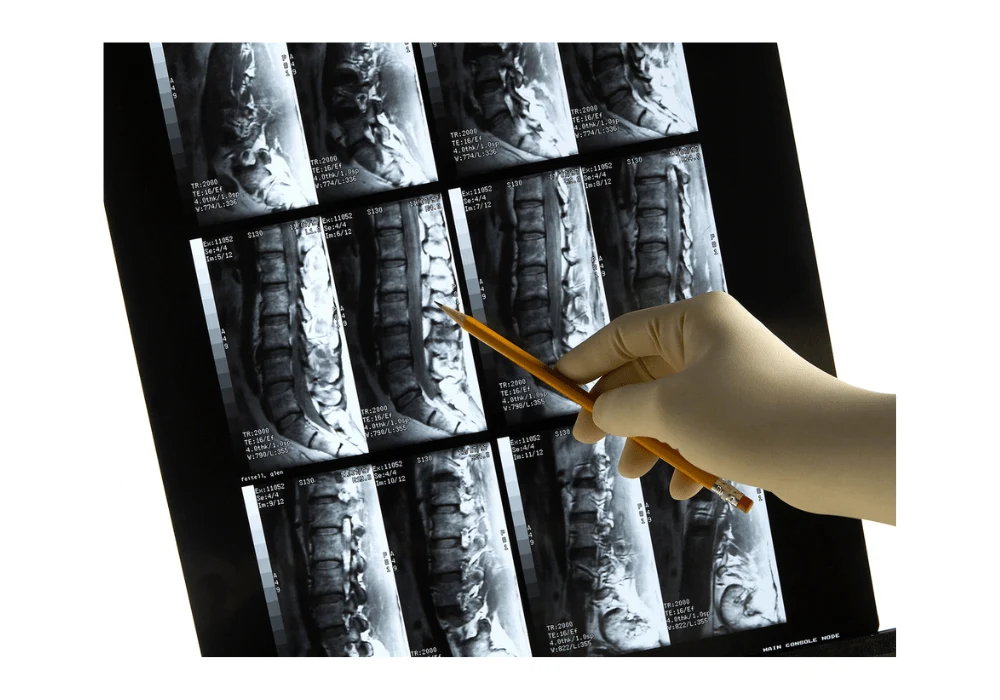Axial spondyloarthritis (axSpA) encompasses a group of inflammatory diseases affecting the axial skeleton, characterised by inflammation, bone erosion, new bone formation, and potential ankylosis. The sacroiliac joints (SIJs) are primarily affected, with possible involvement of the spine or appendicular skeleton. Due to the challenge of clinical examination in these areas, imaging plays a crucial role in diagnosis. MRI is particularly useful for detecting bone marrow oedema, a key indicator of active inflammation in axSpA. Radiographic evidence of inflammatory sacroiliitis on suitable imaging modalities enhances diagnostic specificity.
Effective management of axSpA relies on clear communication between referring clinicians and radiologists who interpret imaging findings. However, many radiologists lack specific training in arthritis imaging, and rheumatologists may not be proficient in interpreting complex imaging studies. To address these challenges, efforts have been made to standardise imaging reporting and requests, and ASAS has initiated recommendations to improve communication and standardise SIJ imaging reports in axSpA patients, aiming to enhance diagnostic accuracy and treatment decisions.
Literature Review and Consensus Approach
The literature review conducted on PubMed in February 2021 focused on current reporting guidelines for imaging in axial spondyloarthritis (axSpA), covering radiography, MRI, and CT. Out of 45 publications identified, two included recommendations specific to axSpA imaging reporting. Following this review, a steering committee drafted a project statement and designed questionnaires, which were circulated among ASAS members. The first questionnaire, comprising 40 questions, aimed to identify key items for inclusion in the recommendations. Subsequent discussions and a second questionnaire, consisting of 79 questions, further refined the recommendations based on consensus among ASAS members. The resulting draft recommendations were generated by the steering committee, incorporating items that received majority support from ASAS members during the process. These recommendations are intended to guide rheumatologists and radiologists in the standardised reporting of imaging findings in axSpA.
Consensus-Based Development of Imaging Reporting Guidelines for Axial Spondyloarthritis
The recommendations for reporting imaging in axial spondyloarthritis (axSpA) were finalised through a process involving discussion and modification within the task force via email. The draft recommendations were presented to ASAS members at their annual workshop in 2022, where members voted on each recommendation. The level of agreement was rated on a numerical scale from 0 to 10. Overall, 75.3% of ASAS members responded to the initial questionnaire, and 58.9% responded to the second questionnaire, resulting in the development of 10 recommendations specifically for reporting imaging of the sacroiliac joints (SIJ) and one for spine lesions. The recommendations were accepted, with 73% of ASAS full members voting in favour. Checklists designed to standardise MRI SIJ reports for axSpA patients were included, with additional checklists for other imaging modalities and locations provided in supplementary materials.
Ten Recommendations for Standardising Imaging Reports of the SIJs
- Recommendation 1. The report should start by summarising essential clinical information, including patient age, sex, a summary of symptoms, the suspected diagnosis, whether the examination was requested for primary diagnosis or follow-up, and what imaging was available for comparison.
- Recommendation 2.
- For radiography, the report should include the number of images, types of projections, and the patient’s positioning.
- For MRI, the report should include the applied field strength and sequences with section orientation and thickness, if fat suppression was applied, and whether and what type of contrast medium was administered.
- For CT, the report should include the patient’s position, orientation of reconstructions and section thickness, and a general indication of the radiation dose (e.g., dose-length product).
- Recommendation 3. The anatomic coverage of the examination should be indicated. Protocols and institutional standards vary, especially for cross-sectional imaging. Therefore, the reader of the report must understand how much of the spine is included in an imaging examination of SIJ and if the pelvic SIJ protocol also allows for the detection of hip pathologic abnormalities. The report regarding the anatomic coverage should provide enough information for the reader to judge whether current or past symptoms have been appropriately treated and whether additional imaging is needed to answer any additional clinical questions. For example, it can be useful to know whether the hip joints were covered in an SIJ examination if the patient later reports hip pain.
- Recommendation 4. The report should include a general statement about image quality and complications from imaging, particularly if the examination or its interpretation is affected. The image quality, the completeness of the protocol, and the presence of any artefacts are essential for reaching a conclusion from the examination. Reduced quality might necessitate a repeat of the examination or indicate that a different imaging modality should be used, especially if the reduced image quality meant the clinical question for conducting the imaging could not be sufficiently answered. Imaging complications (e.g., from contrast media or claustrophobia) should also be reported to ensure the imaging strategy is modified appropriately for future examinations.
- Recommendation 5. Bone marrow oedema/osteitis, erosions, and fat lesions are significant findings that the report should list semiquantitatively with their localisation specified. Their absence should be stated clearly. The report should include whether other active or structural lesions are present. Structural lesions should be reported per individual bone. The radiologists can summarise the absence of those active or structural lesions in the report.
- Recommendation 6. Findings unrelated to spondyloarthritis but of potential clinical importance should be mentioned when present. Whereas imaging findings may confirm a diagnosis of axSpA, it is also possible that they may indicate an alternative explanation for the patient’s self-reported symptoms. Therefore, potentially important pathologic abnormalities such as gas inside the joint (known as vacuum phenomenon), osteophytes, transitional vertebrae, anatomic variations, and spinal malposition should be included in the report. These findings can point towards a potential differential diagnosis or help with the interpretation of other findings, especially bone marrow oedema. Although not restricted to this list, the ASAS members acknowledged the frequency and importance of these lesions.
- Recommendation 7. The radiologist should clearly state if the findings are compatible with axSpA based on the images and clinical information available. The conclusion should state whether there is active inflammation or structural changes with the most prominent lesions and give an indication of confidence in the interpretation of the findings.
- Recommendation 8. Based on the examination findings, differential diagnoses and their probability should be detailed, especially if more likely than spondyloarthritis.
- Recommendation 9. If the examination findings are inconclusive, radiologists are encouraged to suggest further imaging. Despite high clinical suspicion, imaging findings may be negative or ambiguous for axSpA, and further imaging may thus be warranted to enhance the diagnostic yield.
- Recommendation 10. If the examination indicates spondyloarthritis and a rheumatologist did not request the imaging investigation, the radiologist should recommend referral to a rheumatologist for further assessment.
Source: RSNA Radiology
Image Credit: iStock






